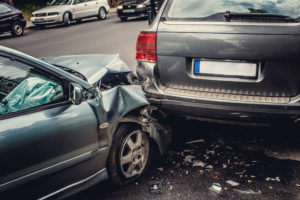An Ohio Amusement Park Accident Attorney Can Help Determine Who’s at Fault for a Guest’s Injuries
Claims from accidents occurring during trips to Ohio amusement parks can range from minor food-borne illnesses to serious injuries and deaths.
It has been estimated that there are almost 10,000 ER visits per year from amusement park injuries, with most occurring in one of two settings:
•Mobile rides that move from one place to another, such as in state fairs and carnivals
•Fixed rides that are a permanent part of attractions at amusement parks like Cedar Point, Kings Island or Disney World
There may be a variety of claim types that can be filed by a person who is injured on a ride, or while in the amusement park. The two most prevalent Ohio amusement park injury claims are based on product liability and negligence. Product liability claims occur when there is a faulty or defective ride that causes injury, and negligence occurs when the park’s workers breach the duty of care owed to visitors. In this guide, readers will learn who is usually responsible for amusement park injuries, and they will learn how an Ohio amusement park injury lawyer can help them win a negligence, strict liability or product liability suit against the park or its owners.

Amusement Park Injuries and Accidents: Who’s Responsible?
Depending on the specific circumstances surrounding an incident, liability for an Ohio amusement park accident typically correlates with the real cause of the injury. For instance, if an accident is caused by the carelessness or negligence of park employees or ride operators, the park itself can be held legally responsible for injuries caused to visitors. The plaintiff and his or her attorney must prove that the park owed a duty of reasonable care, that the park failed in that regard, and that the breach caused their injuries.
Common Types of Amusement Park-Related Negligence Claims
The following is a list of the most common types of negligence-based claims filed against Ohio amusement parks.
•Failure to keep the ride or attraction safe for visitors through periodic inspection and proper maintenance
•Failure to provide adequate warnings or proper instructions
•Negligent use of an attraction or ride that causes injury to guests
•Failure to warn a member of a high-risk group of the dangers inherent in a ride or attraction
•Failure to keep outside areas such as walkways safe for the public’s use
•Rides that are so dangerous that it’s impossible to maintain or operate them in a safe manner, even with reasonable care
Common Types of Product Liability Claims Related to Amusement Park Rides
Even if an amusement park or its employees didn’t act negligently or carelessly, the amusement park can be held legally responsible for injuries suffered by plaintiffs due to broken components or defective rides. Some accidents are caused by parts themselves, not poor maintenance or negligence, but because of a design flaw. If a ride is defective, the plaintiff may be forced to pursue the designer or builder of the ride because the park can’t be held liable in that they weren’t the proximate cause of the injury.
What Kinds of Factors Determine the Standard of Reasonable Care?
In most cases, “reasonable care” concerning amusement park attractions and rides deals with the danger presented by the ride. For instance, most courts expect minimal supervision and maintenance for carousels. However, amusement parks must typically constantly inspect and supervise a lengthy roller coaster. For extremely risky rides, courts sometimes impose the standard of care typically expected of common carriers like trains, buses, planes and subways. Courts may consider additional factors such as:
•The intended ridership’s average age
•The rider’s potential negligence or fault for his or her own injuries
•Interference by third parties
•Extraordinary factors or events that can cause injuries
•Violations of state law or inspection codes
•A history of prior incidents on the same ride
Other factors may be at play, depending on the case’s individual circumstances. No two personal injury cases are alike, and clients should have an Amusement Park Accident Attorney evaluate their case to determine whether a solid legal claim exists. These cases are often complex, and clients shouldn’t try them on their own; they should rely on the advice of Ohio amusement park accident attorneys.
When the Rides are Built by the Amusement Park Itself
If a ride is manufactured or built in the amusement park, the company may be sued for a guest’s personal injuries under the doctrine of product liability.
In such cases, the park faces strict liability, which means that the court need not consider whether reasonable care was shown. Some courts have imposed product liability rules even in cases where the ride wasn’t built in or by the park.
This often happens when a park continues operation of a ride that is known to be defective and to have a high risk of injury.
Should an Injured Amusement Park Guest Call a Personal Injury Attorney?
If a person is hurt during a trip to a local amusement park and they wish to assess the viability of a potential legal claim, they should consult an Amusement Park Accident Attorney as soon as possible.
An Ohio amusement park injury lawyer can help clients investigate the circumstances of a case and possibly recover economic damages. Those hurt on Ohio amusement park rides or attractions should call a lawyer for a no-obligation initial consultation.
A local amusement park injury attorney can help determine whether the park exercised a reasonable level of care, or performed negligence.




